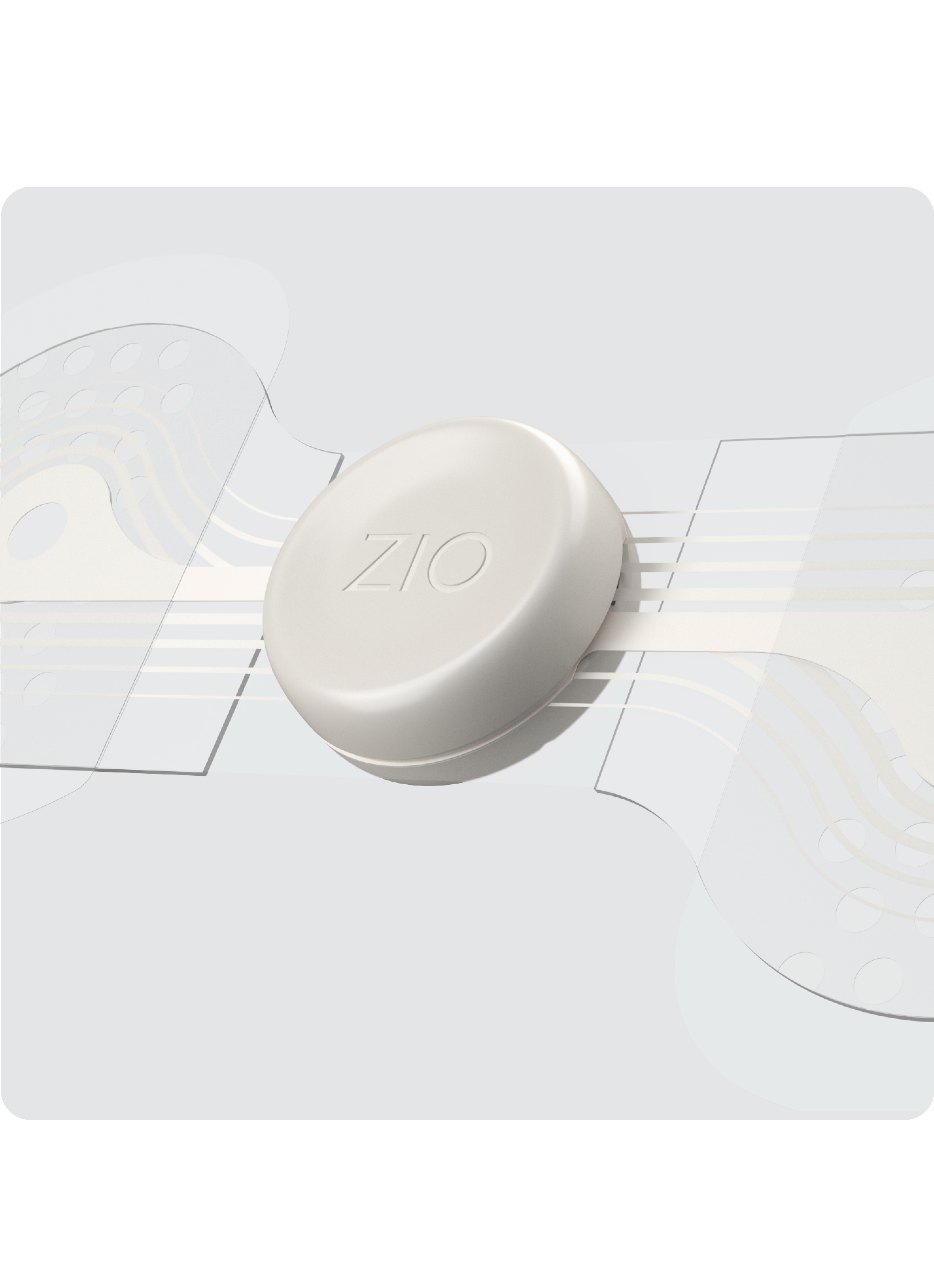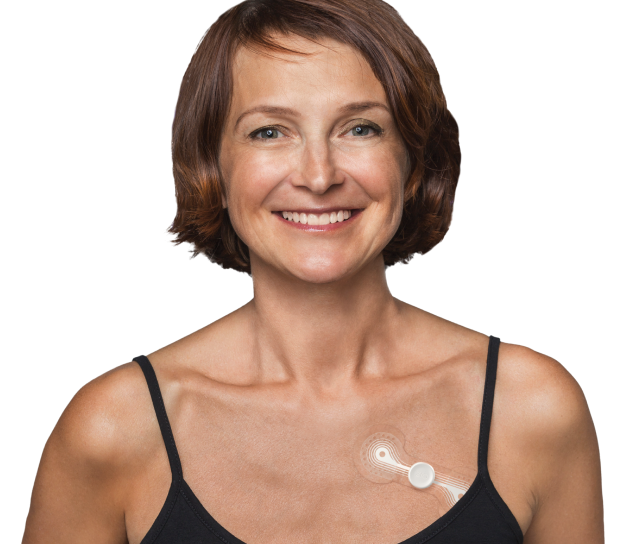The burden of cardiac arrhythmias, such as atrial fibrillation (AFib), is significant. Research shows a strong link between arrhythmias and other chronic diseases, including cardiometabolic conditions.
Cardiac Monitoring in Primary Care
Zio® ECG monitors, combined with iRhythm's comprehensive cardiac monitoring service, allow primary care providers to efficiently assess patients for potential arrhythmias, leading to faster diagnoses and streamlined treatment plans.1

The precise solution for primary care patients
The iRhythm monitoring service, utilizing our Zio long-term continuous monitoring (LTCM) devices, enables you to deliver the right care at the right place and time, providing highly accurate, actionable data2-4 while patients remain in the primary care setting.

AFib is up to 3X more prevalent than previously thought14

The Zio monitor
The Zio ECG monitor is a prescription-only, single-use ECG monitor that continuously records data for up to 14 days. It is indicated for use on patients who may be asymptomatic or who may suffer from transient symptoms such as palpitations, shortness of breath, dizziness, lightheadedness, pre-syncope, syncope, fatigue, or anxiety. Zio ECG monitors are indicated to detect 13 types of arrhythmia classes, plus sinus rhythm and artifacts18-21:
- Sinus
- Atrial fibrillation (AF)
- Supraventricular tachycardia (SVT)
- Ectopic atrial rhythm (EAR)
- Junctional
- Bigeminy
- Trigeminy
- Complete heart block (CHB)
- AVB Type II
- Wenckebach
- Ventricular tachycardia (VT)
- Idioventricular rhythm (IVR)
- PAUSE

Designed with patients in mind
Zio ECG monitors are small9 and comfortable12,13 so patients can go about their daily activities.12,13
- High patient satisfaction13,22 resulting in outstanding compliance with prescribed wear times23
- 2x more likely to result in specified arrhythmia diagnoses compared to Holter monitoring services3,4,10,11
- Flexibility to fit in your practice’s workflow — monitor can be applied in-clinic or via Home Enrollment by patients

End-of-wear reports with 99% physician agreement24
The Zio end-of-wear report is accurate and succinct9 — generated after analysis by an FDA-cleared, deep-learned algorithm and curated by Qualified Cardiac Technicians.18-21
- The algorithm can classify a broad range of distinct arrhythmias with high diagnostic performance similar to that of cardiologists19
- The Zio report provides a comprehensive end-of-wear analysis based on the full wear period18-21
- The cover page offers a comprehensive overview of the most important cardiac events, while the rest of the report provides a detailed, easy-to-navigate deep dive into the finer points of the data collected
Keep reading
Continue the conversation


Full support
Questions about products, billing, or our services? We have you covered.
iRhythm offers dedicated support to help with issues like inventory management and customer satisfaction. We even have a specialized billing team to help manage revenue cycle questions and billing inquiries available 24/7/365.
WEB0185.01
- ZioSuite Clinical Reference Manual. iRhythm Technologies, 2022.
- Steinhubl et al. Effect of a Home-Based Wearable Continuous ECG Monitoring Patch on Detection of Undiagnosed Atrial Fibrillation. JAMA. 2018;320(2):146. doi:https://doi.org/10.1001/jama.2018.8102
- Zio LTCM service refers to Zio XT and Zio monitor service.
- Based on previous generation Zio XT device data. Zio monitor utilizes the same operating principles and ECG algorithm. Additional data on file.
- Kim et al. Geographic Disparities in Access to Cardiologists in the United States. J Am Coll Cardiol. 2024 Jul 16;84(3):315-316. doi.org/10.1016/j.jacc.2024.04.054
- AMN Healthcare/Merritt Hawkins. 2022 Survey of physician appointment wait times and Medicare and Medicaid acceptance rates. AMN Healthcare. 2022. Accessed September 27, 2024. /www.wsha.org/wp-content/uploads/mha2022waittimesurveyfinal.pdf
- Based on a survey of cardiologist offices in 15 major metropolitan markets across the U.S.
- Barrett et al. Comparison of 24-hour Holter Monitoring with 14-day Novel Adhesive Patch Electrocardiographic Monitoring. The American Journal of Medicine. 2014;127(1):95.e11-95.e17. doi:https://doi.org/10.1016/j.amjmed.2013.10.003
- Data on file. iRhythm Technologies, 2023.
- Reynolds et al. Comparative effectiveness and healthcare utilization for ambulatory cardiac monitoring strategies in Medicare beneficiaries. Am Heart J. 2024;269:25–34. https://doi.org/10.1016/j.ahj.2023.12.002
- A specified arrhythmia refers to an arrhythmia encounter diagnosis as per Hierarchical Condition Categories (HCC) 96.
- Zio monitor Instructions for Use. iRhythm Technologies, 2023.
- Battisti et al. Abstract 4141717: Feasibility of point-of-wear patient satisfaction surveys to validate patient-centered product enhancements: results from over 300,000 patients for long-term ambulatory cardiac monitoring. Circulation. 2024;150:A4141717. doi:10.1161/circ.150.suppl_1.4141717. https://www.ahajournals.org/doi/abs/10.1161/circ.150.suppl_1.4141717
- Noubiap et al. Minimum National Prevalence of Diagnosed Atrial Fibrillation Inferred From California Acute Care Facilities. JACC. 2024 Oct, 84 (16) 1501–1508.https://doi.org/10.1016/j.jacc.2024.07.014
- Turakhia et al. Contemporary prevalence estimates of undiagnosed and diagnosed atrial fibrillation in the United States. Clinical Cardiology. 2023;46(5):484-493. doi:https://doi.org/10.1002/clc.23983
- Joglar et al. 2023 ACC/AHA/ACCP/HRS guideline for the diagnosis and management of atrial fibrillation: a report of the American College of Cardiology/American Heart Association Joint Committee on Clinical Practice Guidelines. Circulation. 2024;149:e1–e156. doi.org/10.1161/CIR.0000000000001193
- Staerk et al. Lifetime risk of atrial fibrillation according to optimal, borderline, or elevated levels of risk factors: Cohort study based on longitudinal data from the Framingham Heart Study. BMJ. Published online April 26, 2018. doi:10.1136/bmj.k1453
- Data on file. iRhythm Technologies, 2020.
- Hannun et al. Cardiologist-level arrhythmia detection and classification in ambulatory electrocardiograms using a deep neural network. Nat Med. 2019;25:65-69. https://doi.org/10.1038/s41591-018-0268-3
- Deep learned algorithm is only available in the United States, European Union, Switzerland, United Kingdom, and Japan.
- FDA 510K clearance, CE mark, UKCA mark, and PMDA-approval.
- Data on file. iRhythm Technologies, 2024
- Data on file. iRhythm Technologies, 2022.
- Based on a review of all online Zio XT, Zio monitor, and Zio AT end-of-wear reports. Data on file. iRhythm Technologies, 2023.
WEB0013.03